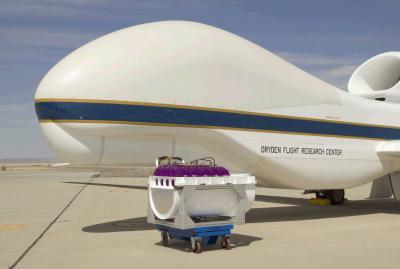In 2007, when talk began of using Global Hawks for Earth science, CPL was among the first sensors considered; its size is perfect for the instrument compartment. Worries about the untested Global Hawk led to a second nearly identical instrument being built for use on the unmanned aircraft. It flew on NASA's maiden Global Hawk Pacific campaign in 2009. Since then, the Global Hawk CPL has flown in two multi-year campaigns, alternating between the Airborne Tropical Tropopause Experiment (ATTREX) and HS3.
Compact and fully autonomous, the CPL lidar design pioneered photon-counting technology that has led to the development of two instruments that will fly in space, the Cloud-Aerosol Transport System (CATS), which launches to the International Space Station this December, and the Advanced Topographic Laser Altimeter System (ATLAS), which will fly on the Ice, Cloud and land Elevation Satellite-2 (ICESat-2) scheduled to launch in 2017.
The solid design of the instrument has borne up surprisingly well over the years, said McGill, who uses CPL as a learning tool for interns and young scientists getting their hands dirty in the field. Together, the twin CPL instruments have flown 26 missions. HS3 will mark the 27th overall and the seventh for the Global Hawk CPL.
"It's still going strong," McGill said.

Global Hawk observes the Saharan Air Layer through the Cloud Physics Lidar(CPL) during Hurricane Nadine (id 4102). More information on this topic available at:http://www.nasa.gov/content/goddard/nasa-hs3-instrument-views-2-dimensions-of-clouds/.
(Photo Credit: NASA)

The second Cloud Physics Lidar built to fly on NASA's unmanned Global Hawk aircraft. In this summer's Hurricane and Severe Storm Sentinel or HS3 mission, the CPL is studying the changing profile of the atmosphere in detail to learn more about how hurricanes form and strengthen.
(Photo Credit: NASA)
Source: NASA/Goddard Space Flight Center